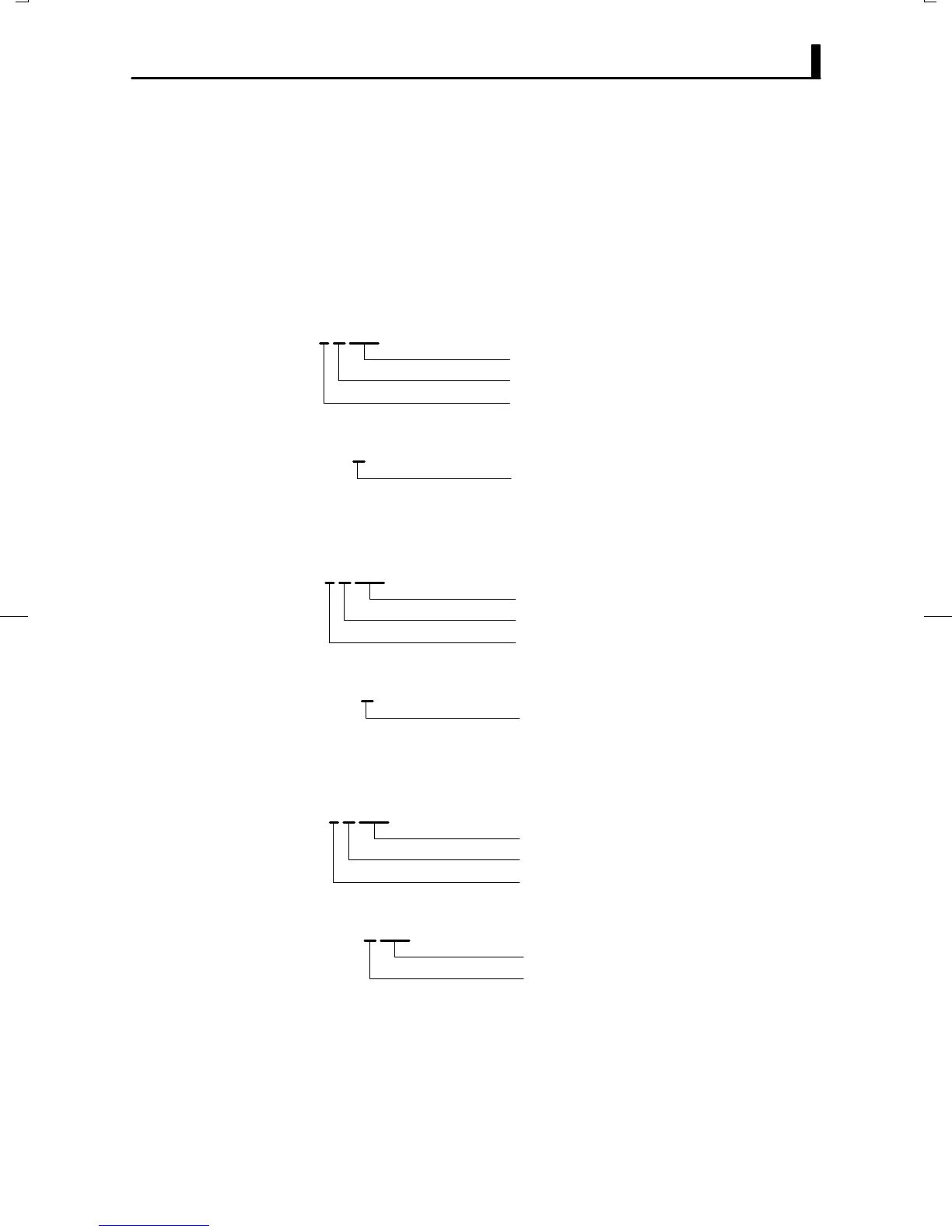6.6 Program Example
E5CK
6–19
JExamples of use
Ă• Set the unit No. to 00".
Ă• In the following examples, data is shown in individual blocks to make the examples
easier to understand. However, when actually creating programs, do not leave spaces
between frame items. Also, response are displayed without spaces between frame
items.
F Set the set point to “300.0”
Ă• Input data
@ 00 5 05 3000
300.0
Set point
Write parameter
Ă• Response
@ 00 5 05 00 3000 (FCS) *
Normal end
F Start running
Ă• Input data
@ 00 3 00 0000
Run
Run/Reset
Special command
Ă• Response
@ 00 3 00 00 0000 (FCS) *
Normal end
F Monitor process value
Ă• Input data
@ 00 1 00 0000
Dummy data
Monitor process value
Read parameter
Ă• Response
@ 00 1 00 00 2000 (FCS) *
Process value = 2000
Normal end
